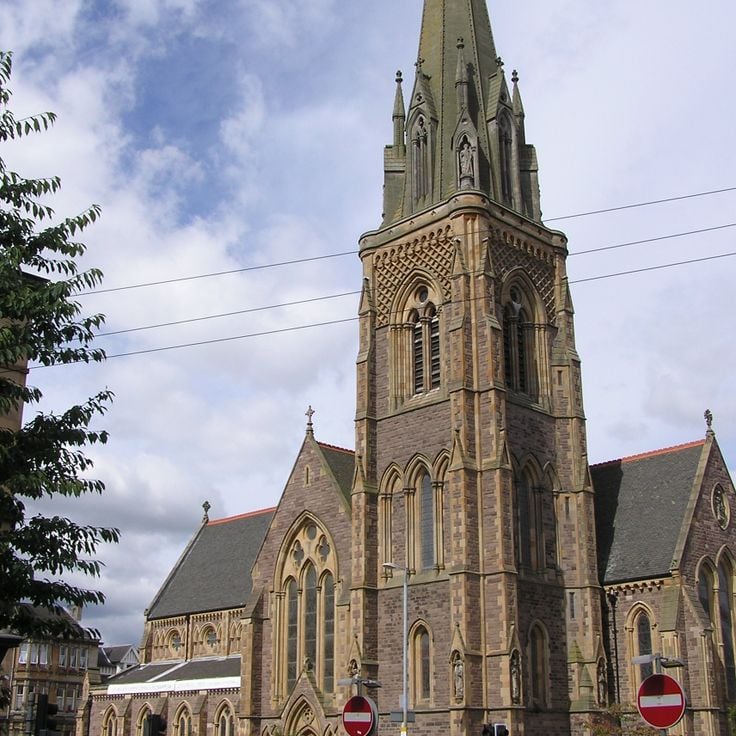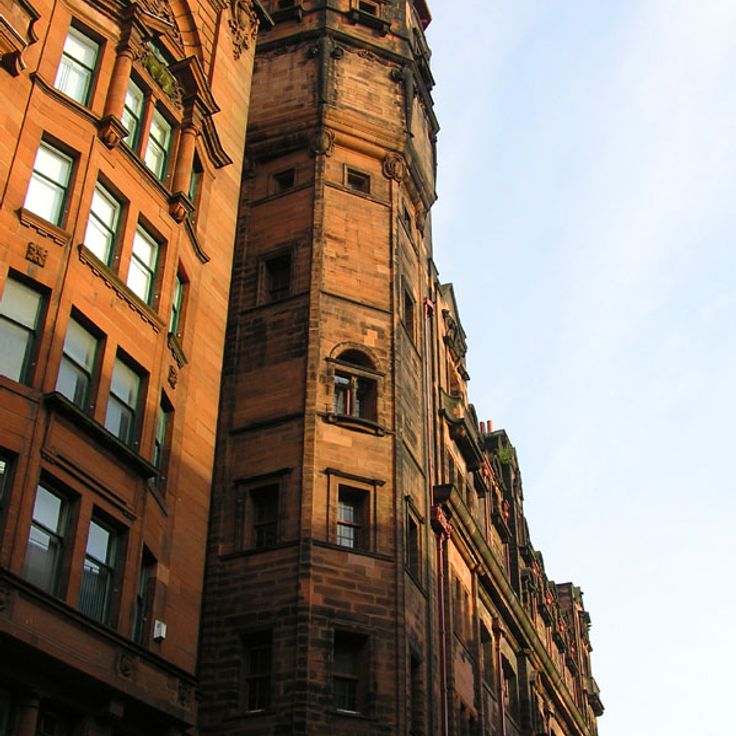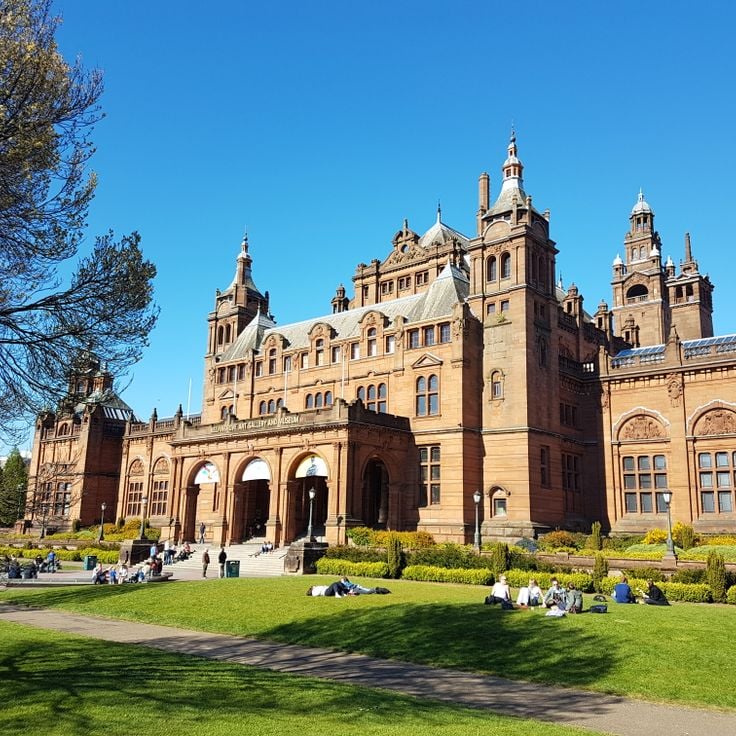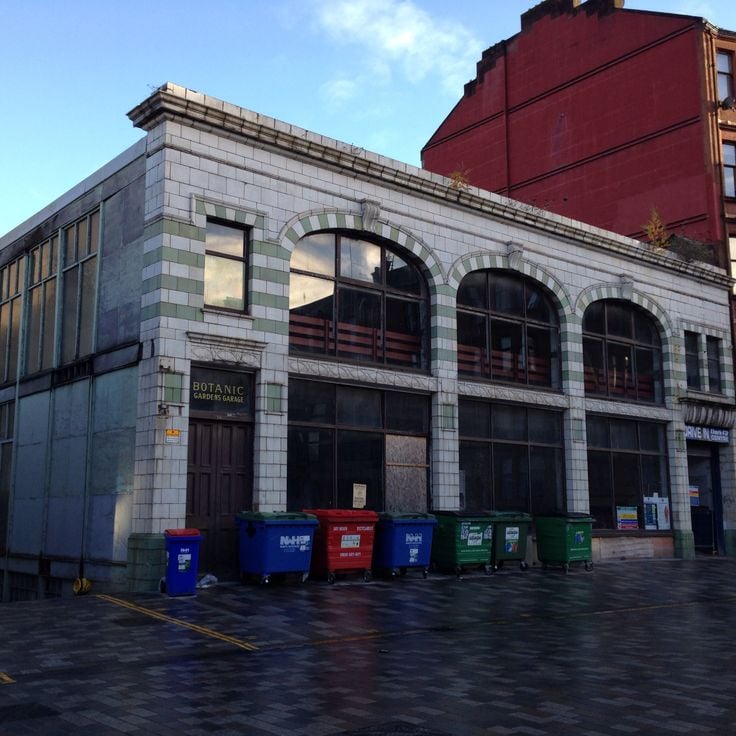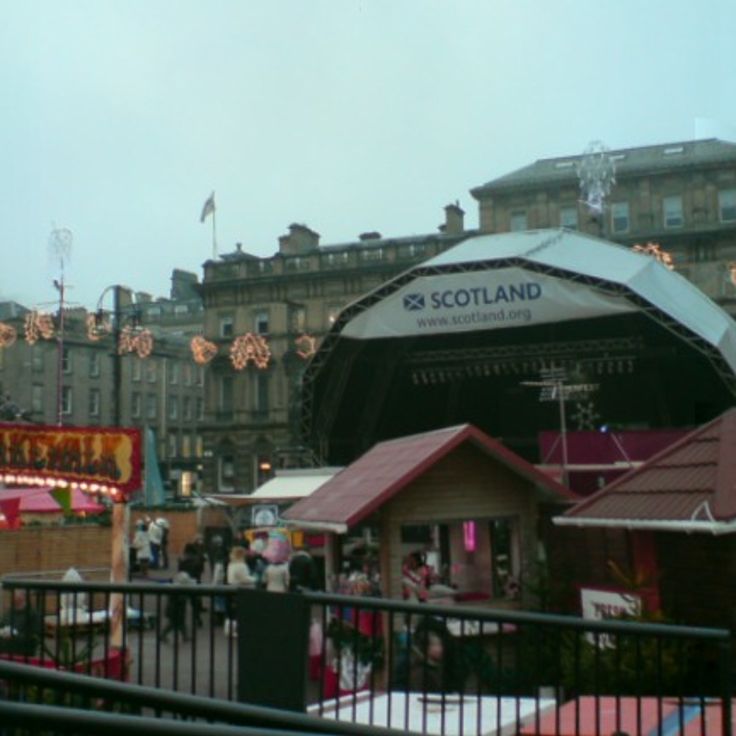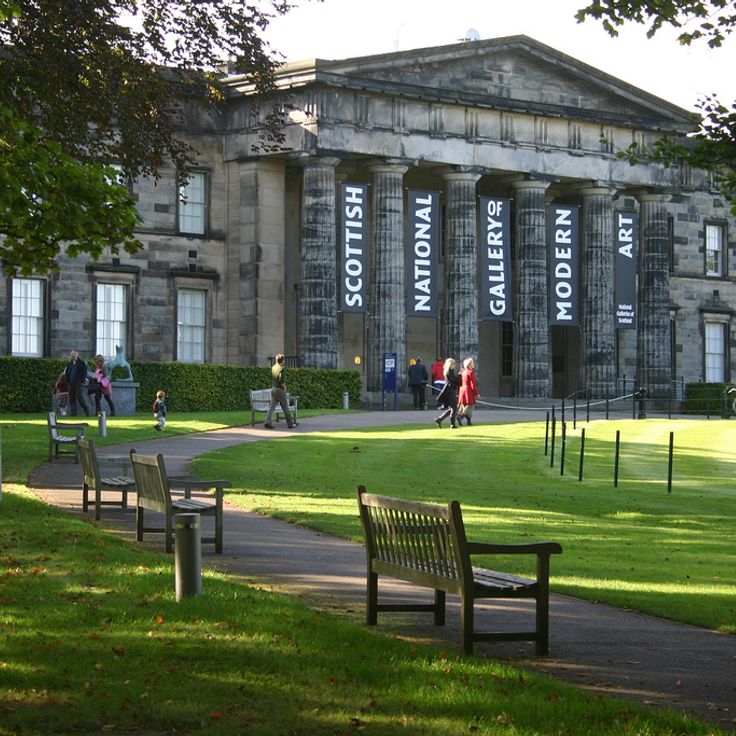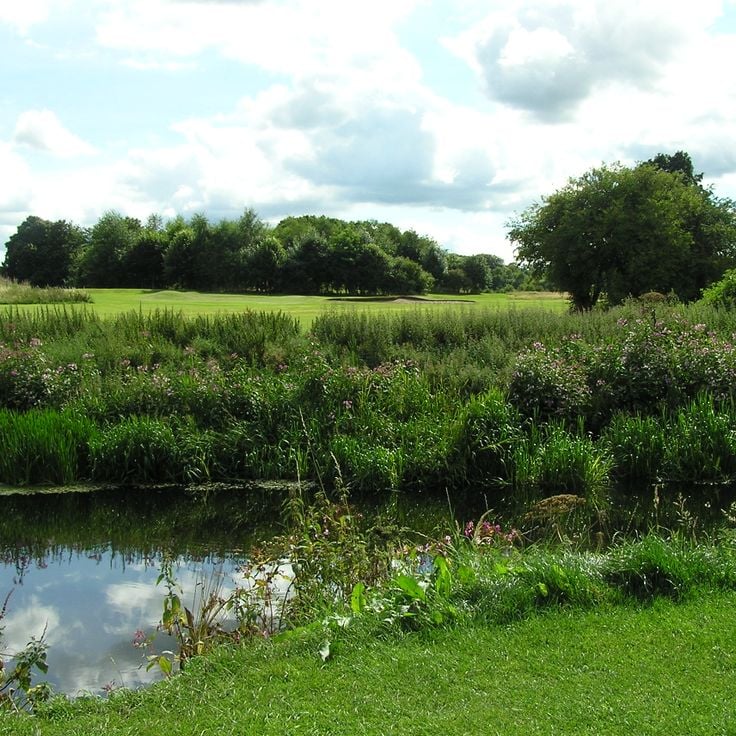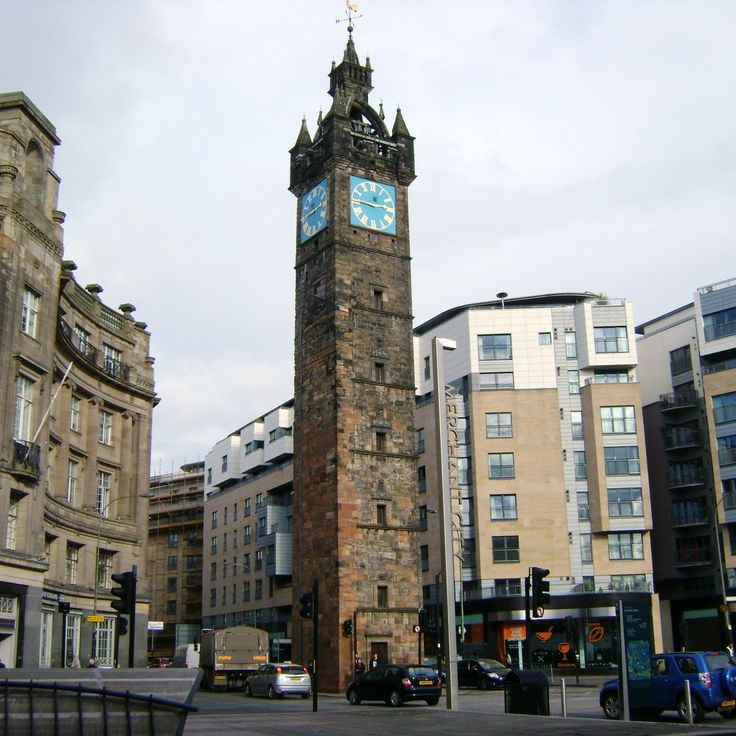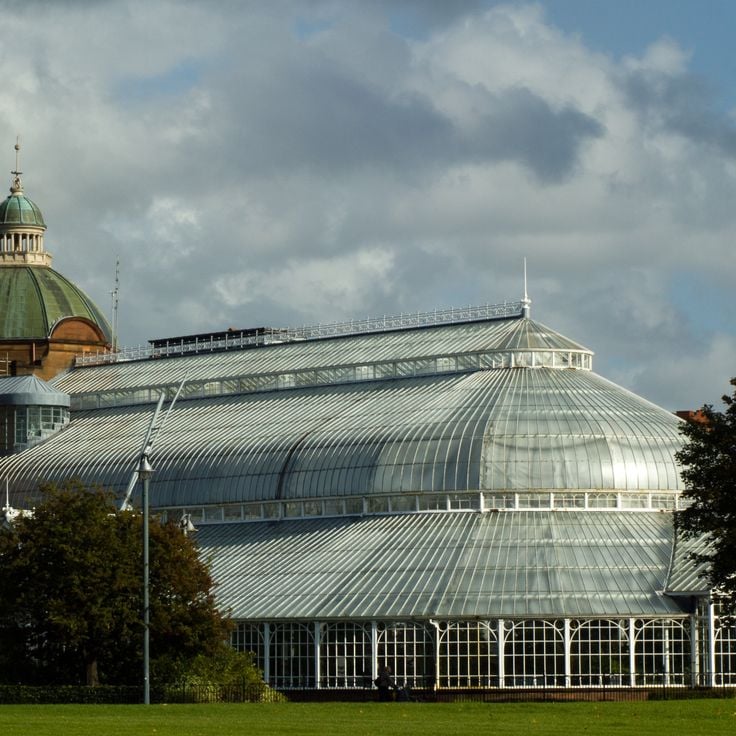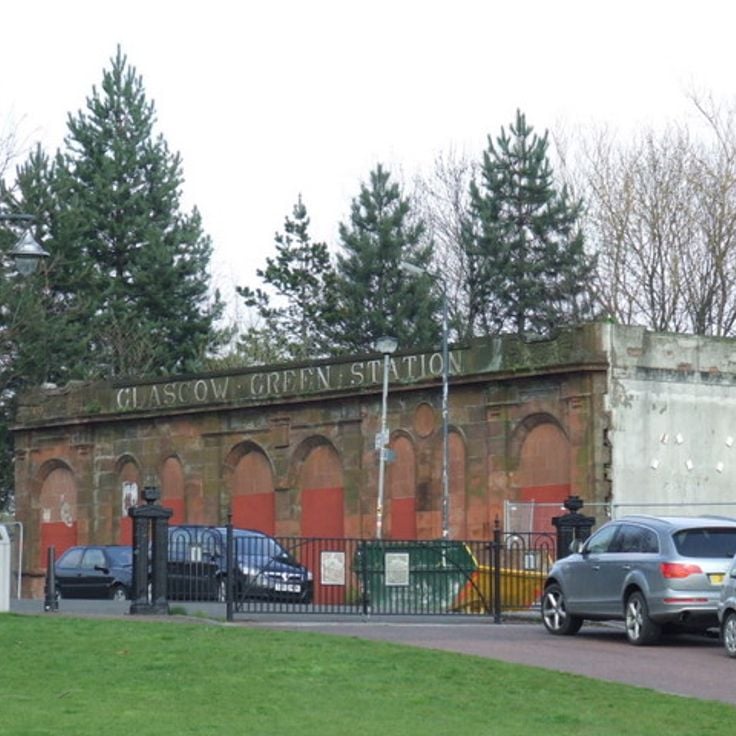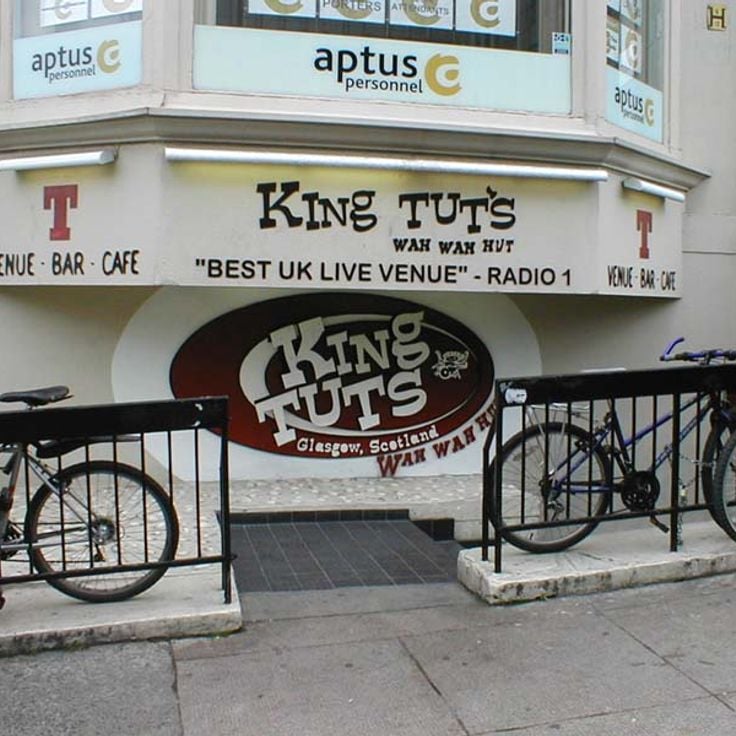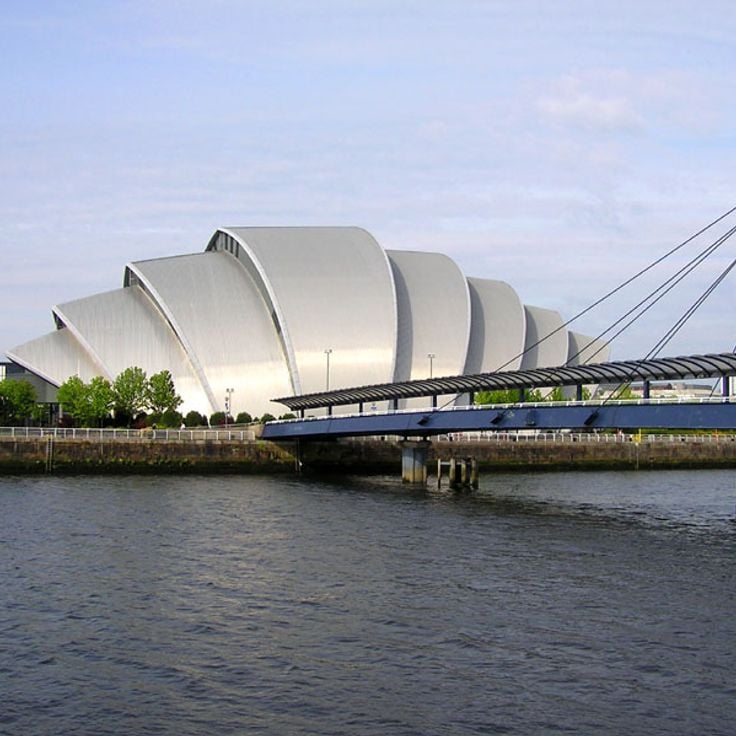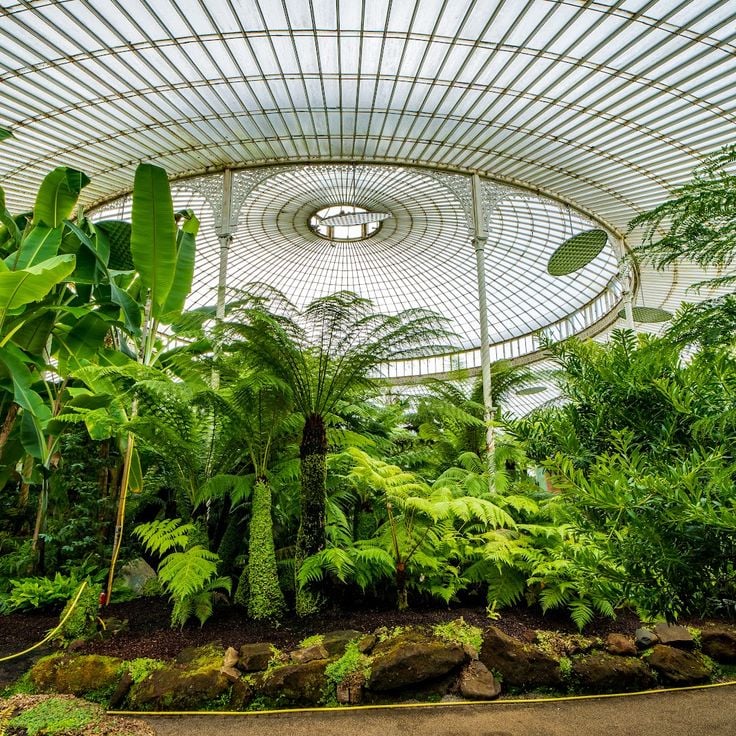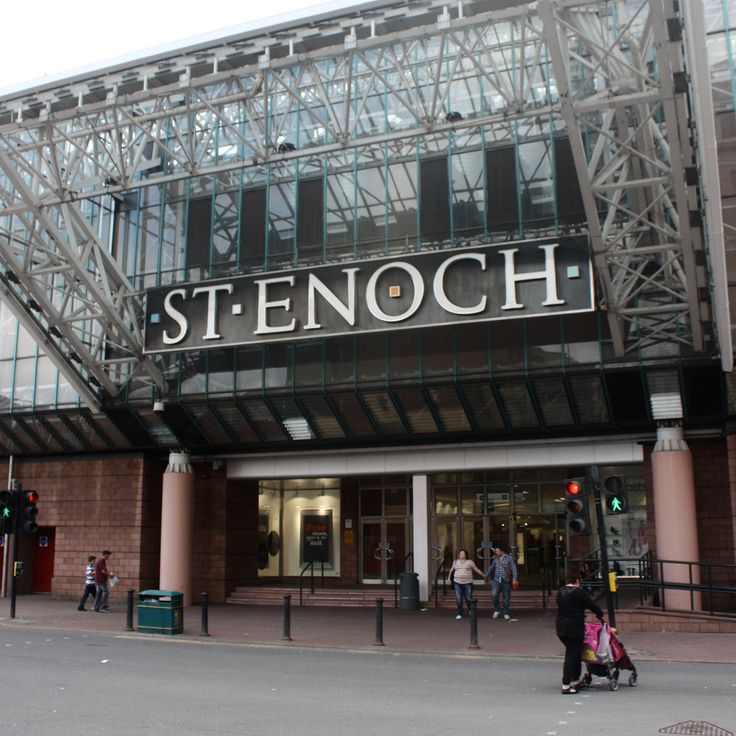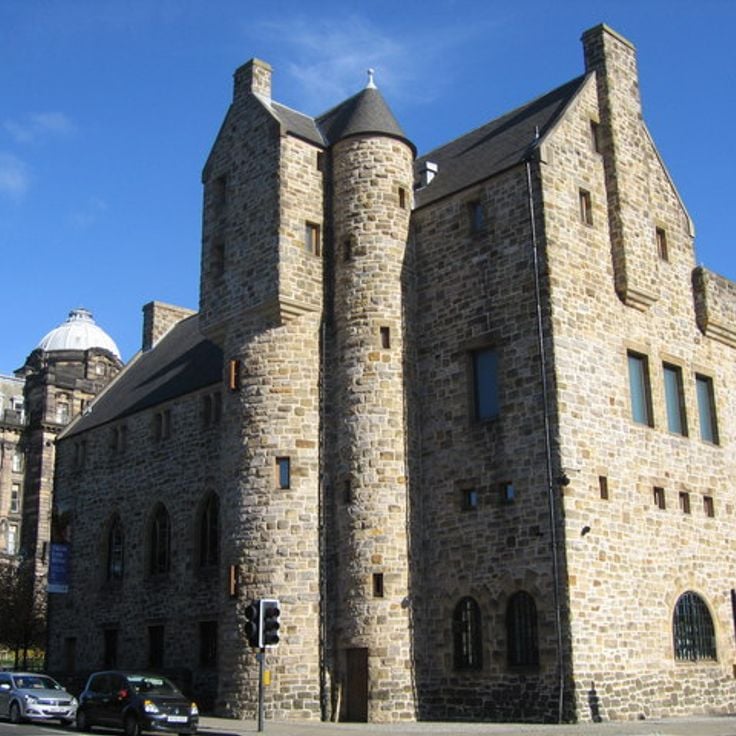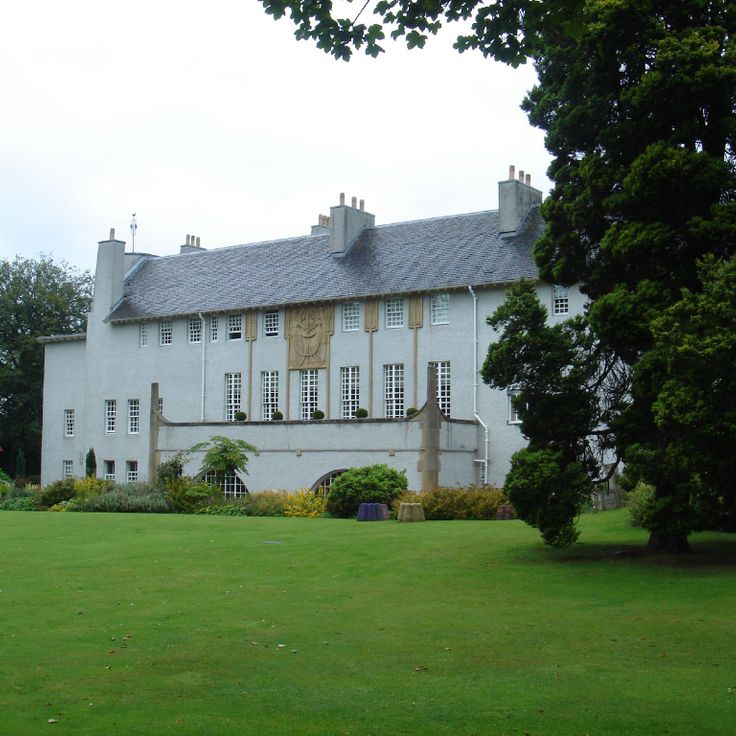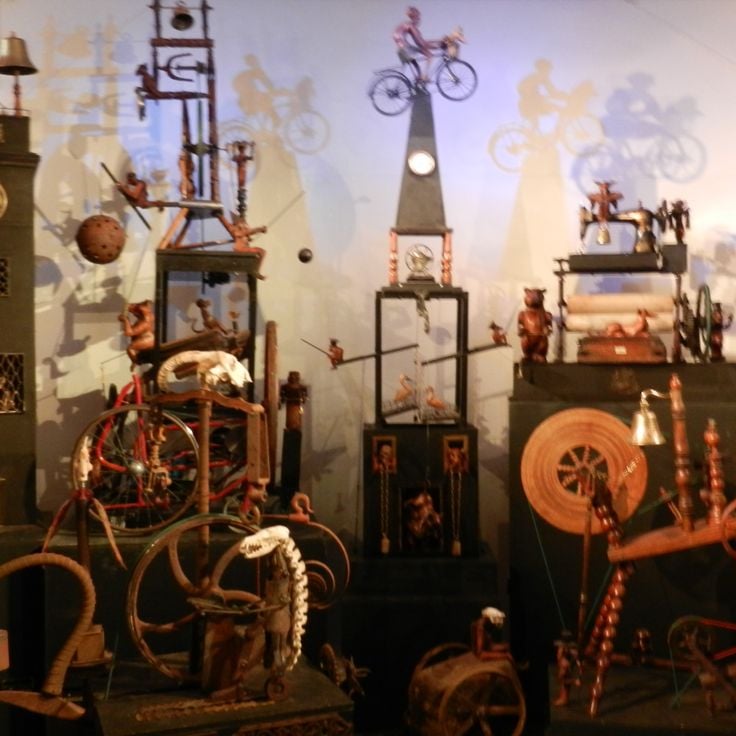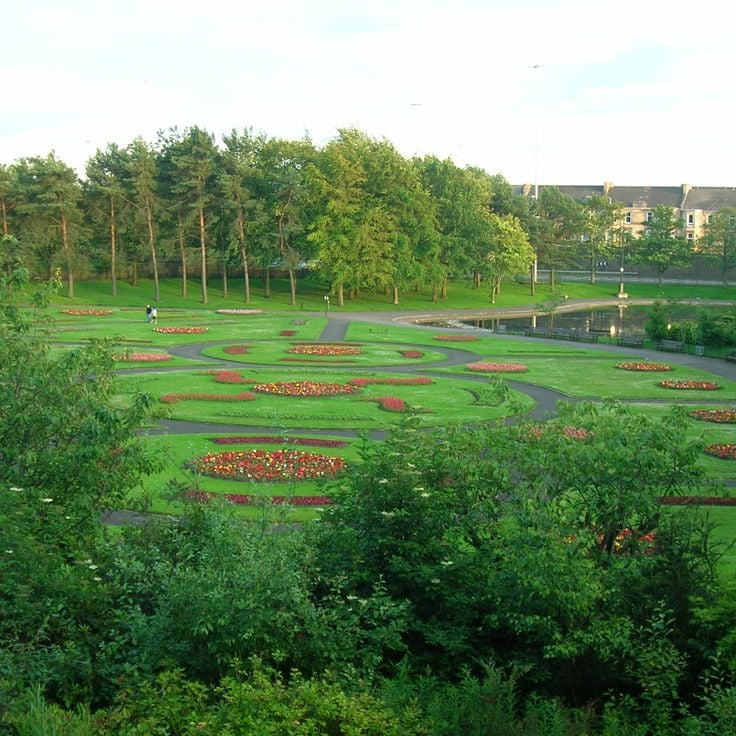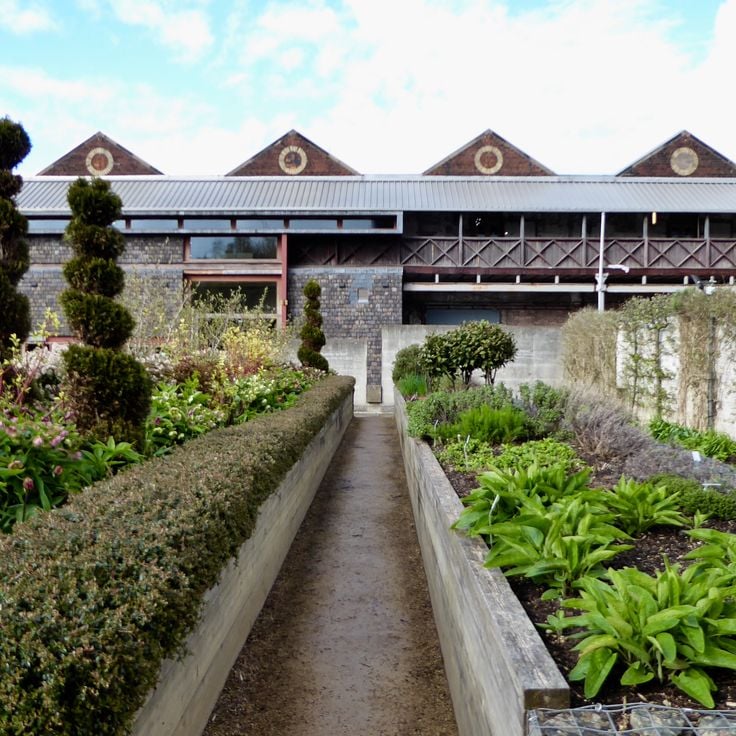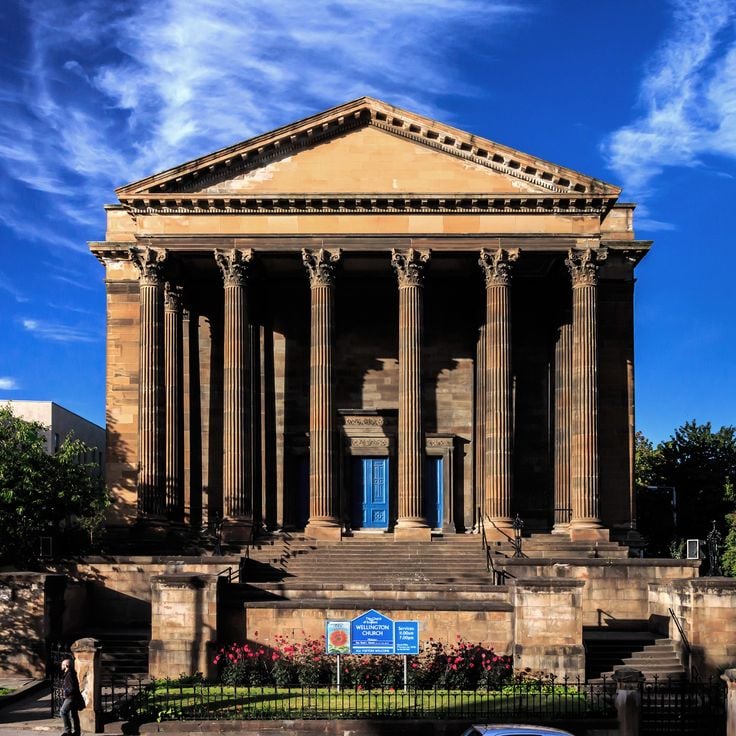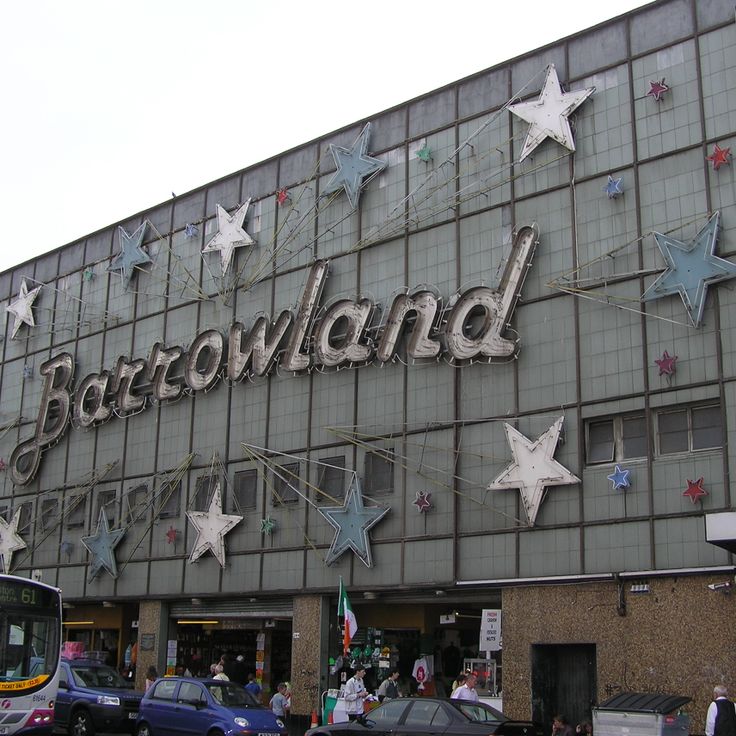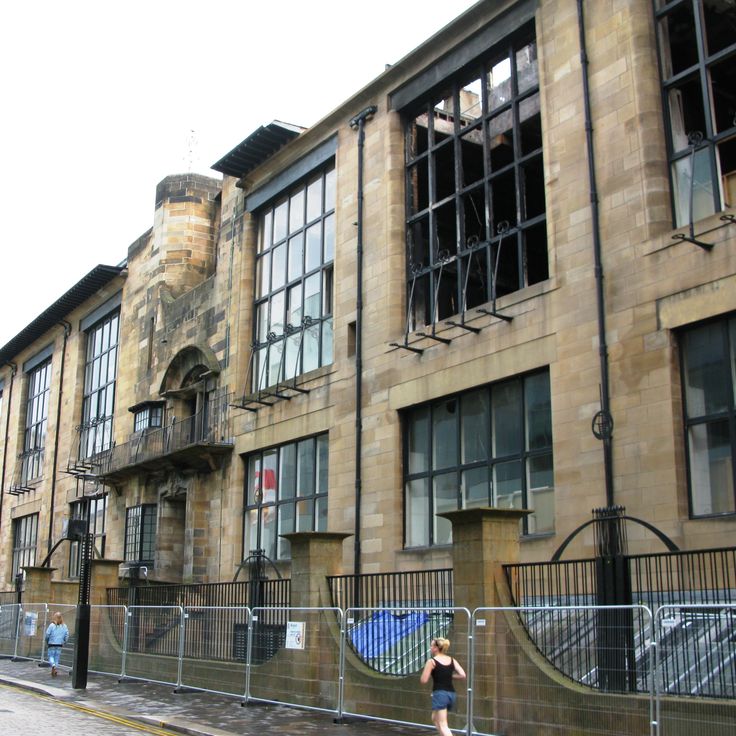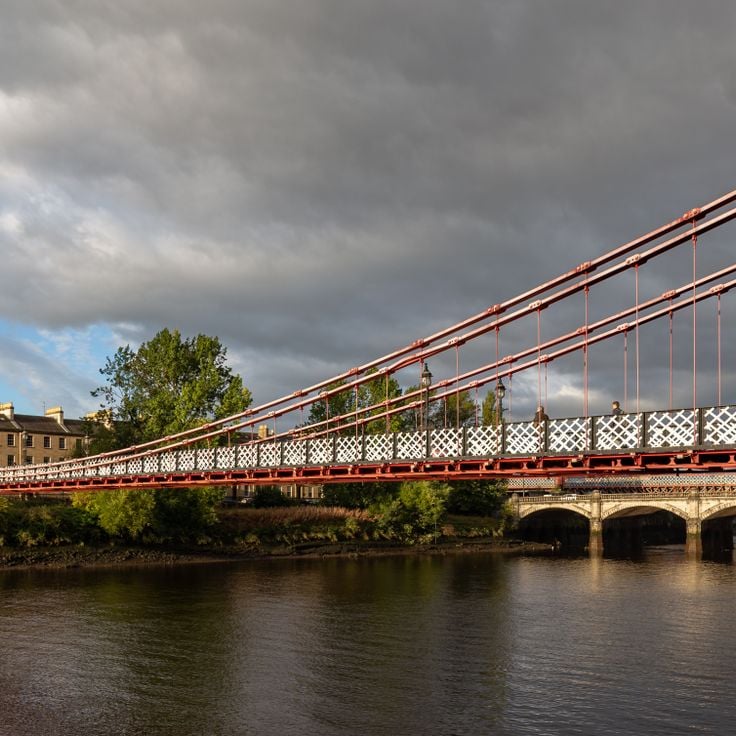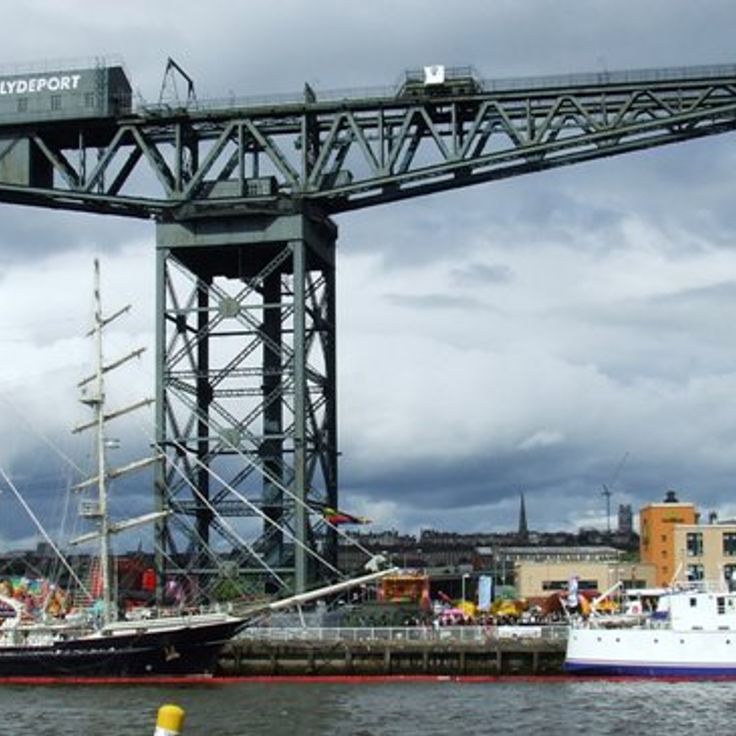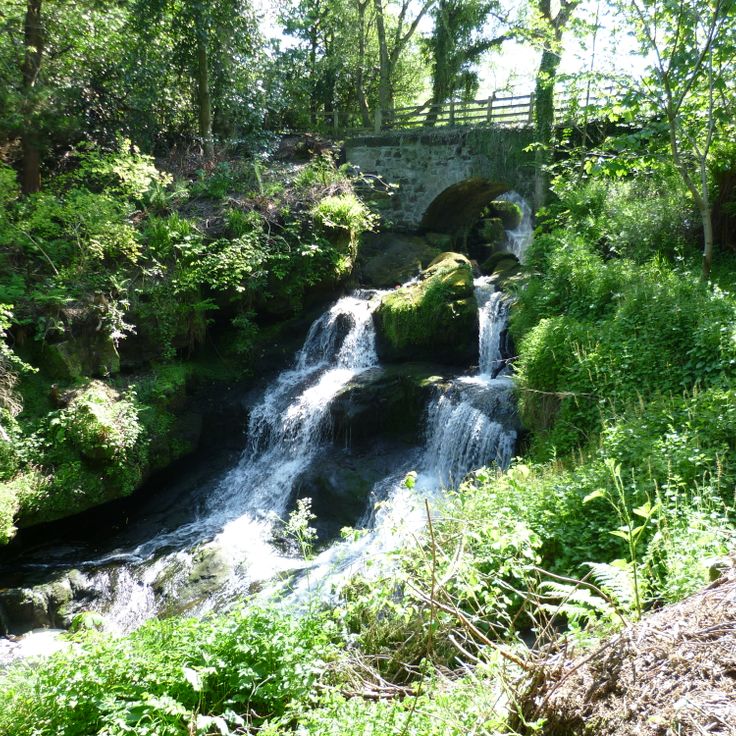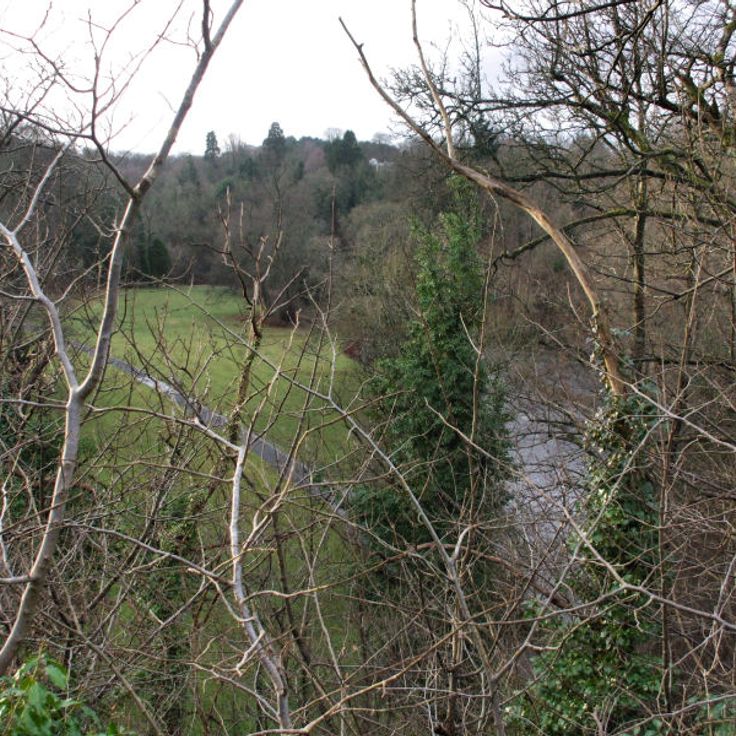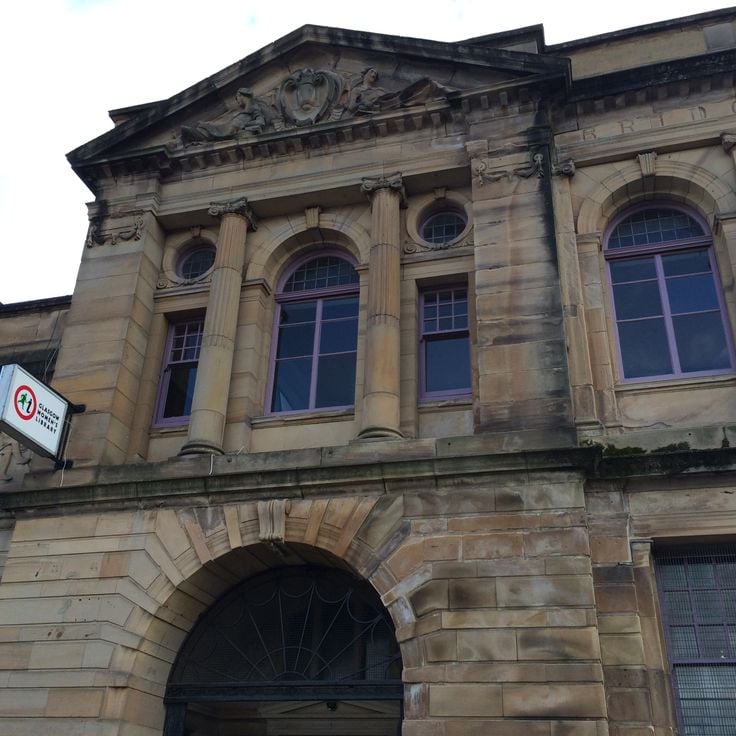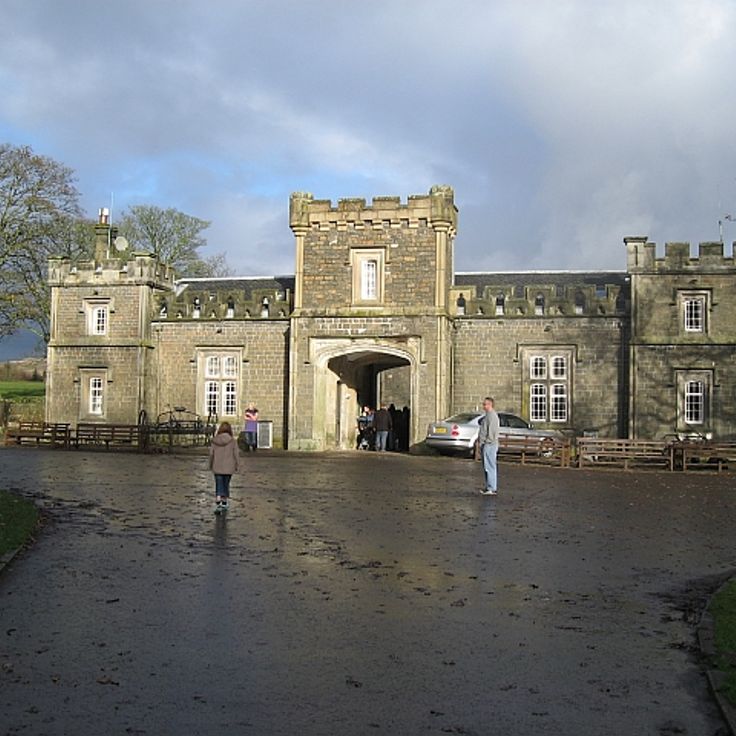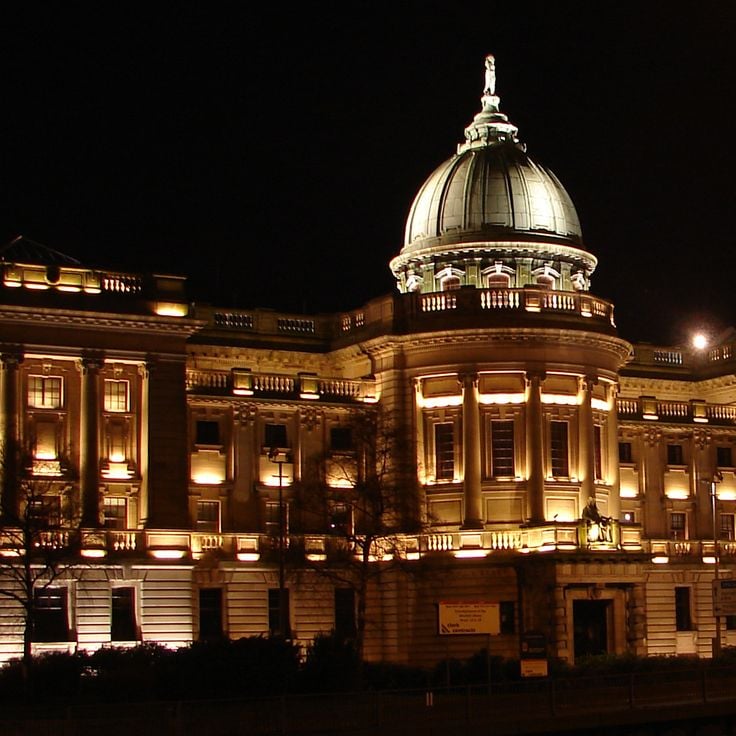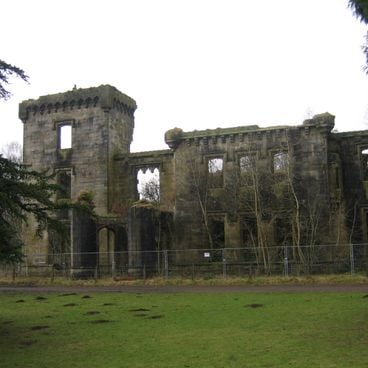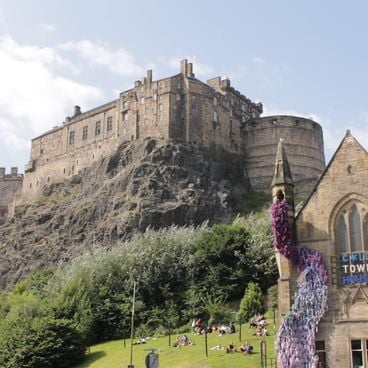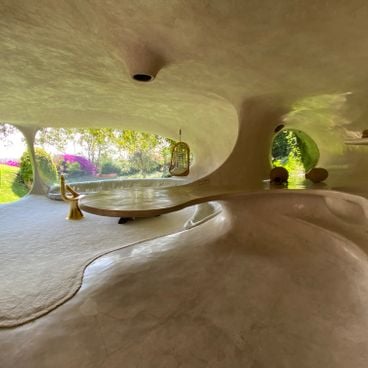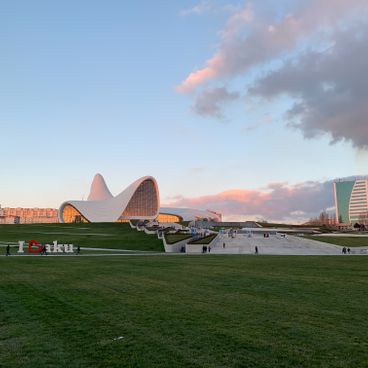Glasgow combines medieval structures with Victorian architecture and modern cultural buildings. The city offers photographers a mix of Gothic churches, sandstone buildings, and green spaces along the River Clyde. The route includes the 12th-century cathedral and the adjacent Necropolis with its monuments on a hillside. Kelvingrove Museum displays Spanish Baroque architecture, while the University of Glasgow presents Gothic towers and courtyards. The Botanic Gardens house Victorian glasshouses with iron and glass structures. The Riverside Museum documents the city's industrial history, and modern venues like the SSE Hydro and Clyde Auditorium complete the route. The collection covers religious, academic, and industrial architecture, along with parks and cemeteries.
Glasgow Cathedral displays through its masonry and columns the construction methods of the 12th century. This medieval church shows the transition from Romanesque to Gothic architecture in Scotland. The crypt holds the tomb of Saint Mungo, the patron saint of Glasgow. The choir and nave present original stone structures from the High Middle Ages. This cathedral is among the few Scottish religious buildings that survived the Reformation without damage.
Ashton Lane in Glasgow is a narrow cobblestone street in the Hillhead district, decorated with string lights and lined with historic buildings. This pedestrian alley hosts several restaurants, traditional pubs, and the Grosvenor Cinema. The lane connects Byres Road to University Avenue and serves as a popular gathering spot for students and visitors. The 19th-century sandstone architecture creates an intimate character, particularly in the evening when lighting illuminates the walls. Ashton Lane fits naturally into this collection of photographs exploring Glasgow's mix of Gothic churches, Victorian buildings, and cultural venues.
The Necropolis is a Victorian cemetery set on a hillside east of the cathedral. This burial ground contains approximately 3,500 monuments in Gothic Revival and Neoclassical styles, including statues, obelisks, and mausoleums. The elevated position offers views across Glasgow and the surrounding districts. For photographers exploring this collection, the Necropolis provides a historical record of the city's wealthy merchants and industrialists, with intricate architectural details and sculptural elements that reflect Victorian craftsmanship and design.
The University of Glasgow is a central point in this photography collection. The main campus was built in the 19th century in the Gothic Revival style and features characteristic towers with tall spires. The buildings display typical Victorian Gothic architecture with high windows, decorated facades, and sandstone walls. The campus includes paved courtyards and garden areas that run through the entire grounds. Historic structures blend with modern educational facilities in this setting.
The Lighthouse in Glasgow is Scotland's national centre for design and architecture, housed in a former newspaper building designed by Charles Rennie Mackintosh in 1895. The building features permanent and temporary exhibitions about Mackintosh's work and contemporary design. Visitors can climb the helical staircase to the viewing platform in the Mackintosh Tower, which offers panoramic views over Glasgow's rooftops. The centre serves as an educational facility and venue for design events. The architecture demonstrates Mackintosh's skill in combining functionality with decorative elements.
Kelvingrove Art Gallery and Museum in Glasgow holds one of Europe's finest civic art collections, featuring works by Rembrandt, Monet and Salvador Dalí. This Spanish Baroque style building opened in 1901 and combines art historical exhibitions with natural history displays. Its 22 themed galleries showcase Scottish history, Egyptian artifacts and armour from different periods. The museum welcomes over one million visitors annually and offers daily organ recitals in the central entrance hall.
The Botanic Gardens of Glasgow sit in the West End and showcase the Victorian architecture central to this photography collection. Large glasshouses with iron and glass structures house tropical plants, ferns, and exotic flowering varieties. A rose garden displays numerous specimens during blooming season, while a pond contains native aquatic plants and water lilies. The site brings together nature and industrial design, offering photographers scenes where Victorian structures meet green spaces.
George Square is the administrative and symbolic center of Glasgow. This public plaza is dominated by the City Chambers, the seat of local government, whose facade follows Italian Renaissance design. Twelve monuments commemorate important Scottish figures, including Queen Victoria, Robert Burns, and Sir Walter Scott. Victorian architecture frames the square on all sides, documenting the city's economic prosperity during the 19th century. For this photography collection, George Square offers the essential subject for Victorian architecture and civic government buildings.
The Gallery of Modern Art in Glasgow displays contemporary art in a neoclassical building from 1778. For photographers, the museum offers interesting contrasts between the historical architecture and modern art installations inside. The building was originally designed as a private residence and now houses works by international artists from after 1945, including Pop Art and Expressionism.
Pollok Country Park appears in this photography collection for its diverse landscapes and historic structures. Located south of Glasgow's city centre, the park features woodland trails alongside the White Cart Water, formal gardens, and the 18th-century Pollok House. Scottish Highland cattle graze across the pastures. The Burrell Collection museum, housed on these grounds, displays over 9,000 artworks. Multiple walking routes connect different areas, offering photographers varied subjects from nature to heritage buildings.
The Merchant City is a district in Glasgow that draws photographers to capture Victorian architecture from the 18th-century tobacco trade era. The streets wind between restored warehouses and former homes of tobacco merchants dating from the 1750s. Today the area houses designer shops, galleries and theatres within these historic buildings. The Italianate facades along Ingram Street show Glasgow's economic power during the industrial revolution and offer photographers plenty of subjects with restored architecture and urban character.
The SSE Hydro is a modern arena featured in Glasgow's photography route, where contemporary architecture meets the city's industrial heritage. Located on the banks of the River Clyde, the building showcases a curved facade with programmable LED lighting that glows in various colors at night. Accommodating up to 13,000 visitors, the arena hosts international music artists, sports championships, and major conferences. Its steel and glass construction forms a distinctive element of Glasgow's skyline and complements the route through Gothic churches, Victorian buildings, and green spaces.
The People's Palace in Glasgow Green houses a museum dedicated to the city's social history. This Victorian red sandstone building opened in 1898 and displays collections that document the everyday life of Glasgow's population from the 18th century to today. The adjoining Winter Gardens form a monumental glasshouse filled with tropical plants and a café. The People's Palace offers rich photographic opportunities for this route through Glasgow, which combines medieval structures, Victorian architecture, and modern cultural buildings.
Glasgow Green is the city's oldest public park, established in 1662. This sprawling riverside space sits on the north bank of the River Clyde and has served as a gathering place for residents for centuries. The park contains several historic monuments, including the People's Palace museum, which documents working-class history, and the Nelson Monument obelisk from 1806. The Doulton Fountain from 1888, a Victorian terracotta structure, stands as one of the park's most photographed features. Glasgow Green offers sports facilities, riverside walking paths, and open lawns used for events and recreation. The park has hosted political rallies, public gatherings, and cultural festivals throughout its history, making it an integral part of the city's character.
The Riverside Museum in Glasgow houses over 3000 exhibits documenting Scotland's transport history. The building, designed by Zaha Hadid and opened in 2011, sits on the banks of the Clyde and contains locomotives, trams, automobiles, bicycles and ship models from different eras. The historic tall ship Glenlee is moored outside the museum. Inside, visitors walk through recreated Glasgow streets and explore historic vehicles in interactive displays. This museum forms part of the photographic route through Glasgow, showcasing the city's industrial past alongside Gothic architecture, museums and Victorian buildings.
King Tut's Wah Wah Hut is a music venue in Glasgow that has operated since 1990 on St. Vincent Street. This establishment served as an important stage for emerging bands and hosted early performances by groups such as Oasis and Radiohead during their first tours. The club remains an active part of Glasgow's contemporary music scene, presenting various musical genres to audiences.
The Clyde Auditorium is a modern concert hall on Glasgow's riverfront, designed with curved metal shells that resemble an armadillo's armoured exterior. This venue fits into the photography route through Glasgow's architecture, which combines medieval structures, Victorian sandstone buildings, and contemporary cultural spaces. The auditorium is part of the Scottish Event Campus and hosts concerts, conferences, and cultural events year-round. Its distinctive curved form contrasts with the classical designs of other buildings throughout the city and defines the character of the riverside.
The Kibble Palace in Glasgow Botanic Gardens is a Victorian cast iron and glass glasshouse that originally opened as a private conservatory in 1863 and relocated to its current location in 1873. In this photography collection of Glasgow, the Kibble Palace exemplifies the city's Victorian architecture alongside its green spaces. The structure shelters a significant collection of tree ferns from Australia and New Zealand, along with tropical plants from various climate zones. Several 19th-century marble sculptures stand among the plant beds inside. The central dome reaches 23 meters in height and creates a microclimate suitable for the vegetation.
St. Enoch Shopping Centre sits in the heart of Glasgow with a glass facade spanning three floors. For photographers exploring this collection, this building shows a different Glasgow, one of modern commerce rather than Victorian stonework and medieval churches. Inside you find retail shops, restaurants, and a multiplex cinema, with direct access to the subway station below.
The St. Mungo Museum in Glasgow displays artworks and objects from world religions and their spiritual traditions. The collections feature liturgical objects, religious manuscripts and pieces from Hindu, Buddhist, Islamic and Christian practices. Visitors encounter sculptures, artefacts and calligraphy that represent how different cultures express their faith through art and ritual. The museum presents rotating exhibitions on religious themes and runs educational programs for schools. Within this photography collection, it complements the route through Glasgow showing religious structures, academic buildings and industrial heritage.
House for an Art Lover in Glasgow demonstrates how architect Charles Rennie Mackintosh imagined a home for someone devoted to art. Built in 1996 in Bellahouston Park, the building follows Mackintosh's designs from 1901. Every element, from the vertical lines of its walls to the interior rooms, works together as one creation. The spaces handle light carefully, and throughout the building you find furniture, glasswork, and decorative pieces that show the architect's artistic thinking.
The Sharmanka Kinetic Theatre in Glasgow showcases mechanical sculptures created by Russian artist Eduard Bersudsky. These moving artworks combine carved wooden figures with recycled metal objects, driven by motors. During performances, the installations come to life accompanied by carefully selected music compositions and theatrical lighting. The figures tell stories about human life, dreams and philosophical themes through their choreographed movements.
Victoria Park in Glasgow sprawls across a large area in the west of the city, offering numerous subjects for photographers. The Fossil Grove displays petrified tree stumps from the Carboniferous period, roughly 330 million years old. The Victorian glasshouse built in 1878 houses a collection of tropical and subtropical plants. Maintained flower beds display changing colours with each season. Wide lawns, ancient trees, and winding paths shape the parkland. The park opened in 1887 and originally served as a recreation space for workers from the nearby industrial areas.
The Hidden Gardens in Glasgow is a public park spread across multiple levels and showcasing plant species from different climate zones. The grounds include Mediterranean-style terraces with stone steps and planted containers, as well as a separate Japanese garden. This section features a quiet meditation area surrounded by Asian vegetation. The different garden sections provide varied perspectives for photographing the botanical collections and designed landscape elements.
Wellington Church in Glasgow is a 19th-century building constructed in the Gothic Revival style. The church displays the characteristic architecture of Scottish ecclesiastical buildings from this period, with tall pointed arches made of dressed stone. A large rose window dominates the main facade and allows natural light to enter the interior space. The tower rises above the nave and serves as a landmark in the surrounding area. Built for the Presbyterian congregation, the church represents the religious and architectural development of Glasgow during the Victorian era. The structure remains an example of 19th-century church design in the city.
Barrowland Ballroom sits in Glasgow's East End and represents the city's modern cultural side alongside its medieval and Victorian architecture. This concert hall opened in 1934 and remains an active venue for live music and entertainment. The large neon sign on its facade has become a recognizable landmark in the neighborhood. The hall attracts performers and audiences from around the world and plays an important role in Scotland's music scene.
The Glasgow School of Art in Glasgow showcases Charles Rennie Mackintosh's architectural vision. Built between 1897 and 1909, the building combines Scottish Baronial architecture with Japanese influences through Mackintosh's Art Nouveau style. The sandstone façade features large studio windows designed to provide optimal light for the workshops. Inside, the library stands out with dark timber, geometric forms, and detailed metalwork. This school complements Glasgow's collection of Victorian and modern cultural buildings.
This pedestrian suspension bridge in Glasgow was built in 1853 and spans the River Clyde. It connects the northern and southern banks of the river, serving as a passage between city districts. The bridge shows Victorian engineering and remains in use today. Its design with supporting cables and iron framework makes it a recognizable feature along the riverfront.
The Finnieston Crane stands on the north bank of the River Clyde and shows Glasgow's industrial past. This steel monument was built in 1931 by Cowans Sheldon and served for over five decades loading railway locomotives and boilers onto cargo ships. The cantilever arm reaches 53 metres high and could lift loads up to 175 tons. After it stopped working in 1988, the crane was preserved as a record of Glasgow's industrial history and is now a landmark of the modern city. This structure connects the city's working heritage to its contemporary identity.
Rouken Glen Park in Glasgow is a key location for this photography route through the city. The park spans a large area in the south of Glasgow and offers varied photographic subjects. A striking waterfall forms the centrepiece of the park and draws photographers throughout the year. The central lake is home to various waterfowl, while maintained gardens display seasonal flowers and shrubs. Woodland paths lead through mature tree stands and allow for nature photography. A historic boathouse by the lakeside serves as an architectural element for compositions.
The Willow Tea Rooms were designed in 1903 by Charles Rennie Mackintosh for businesswoman Catherine Cranston, embodying the principles of the Glasgow School of Art. Located on Sauchiehall Street, these tea rooms combine architecture, interior design, and furniture into a complete work of art. Mackintosh created each room with distinct color schemes and themes: the white Room de Luxe with silver and pink accents, the front salon with darker wood paneling. The high-backed chairs, geometric glasswork, and stylized plant motifs show Art Nouveau influence. After extensive restoration, visitors can now enjoy tea in the faithfully reconstructed rooms that display Mackintosh's vision of modern Scottish design at the turn of the 20th century.
Linn Park in Glasgow covers 82 hectares in the south of the city and shows varied landscapes along the White Cart Water. The park features a waterfall that flows over several levels, extensive woodland areas with mature trees, and open grassland. The ruins of Cathcart Castle, dating from the 15th century, stand on a hillside within the park grounds. Several walking paths traverse the area, connecting different sections of the park. The space offers opportunities for walking and observing nature alongside the city's mix of Gothic churches, sandstone buildings, and green spaces that make Glasgow a compelling subject for photographers.
The Glasgow Women's Library is a museum and archive dedicated to the history and achievements of women. This institution in Glasgow houses extensive collections of documents, photographs, books and personal objects that document the lives and contributions of women in Scotland and beyond. Visitors can explore historical materials, attend events and learn about feminist movements and social issues.
Mugdock Country Park in Glasgow provides photographers with a blend of nature and history. This 270-hectare park contains two castle ruins from the 14th century and features walking trails through woodland and open spaces. A visitor center shares the site's story. The ruins stand against green landscapes, offering another perspective on Glasgow's medieval heritage alongside the cathedral and university buildings included in this collection.
The Mitchell Library stands in central Glasgow as one of Europe's largest public libraries. Built in 1911, this building features a distinctive green copper dome visible across the city. Inside, photographers find spacious reading rooms with tall windows, period furniture, and impressive book collections spanning Scottish history and local records. The library adds to the Glasgow route a place of knowledge and Victorian grandeur, offering a different view of the city's cultural depth.
Bridgeton Cross in Glasgow is a historic junction in the east end of the city, marked by its Victorian clock tower built in 1875. The tower rises above the intersection of several main roads and has served as a landmark for the neighbourhood for over a century. The surrounding red sandstone buildings date from the industrial heyday of the 19th century and reflect the importance of this working-class area during the Industrial Revolution. The architecture combines functional commercial and residential structures with decorative Victorian elements. This site is part of a photography collection documenting Glasgow's cathedrals, museums, and Victorian architecture.
